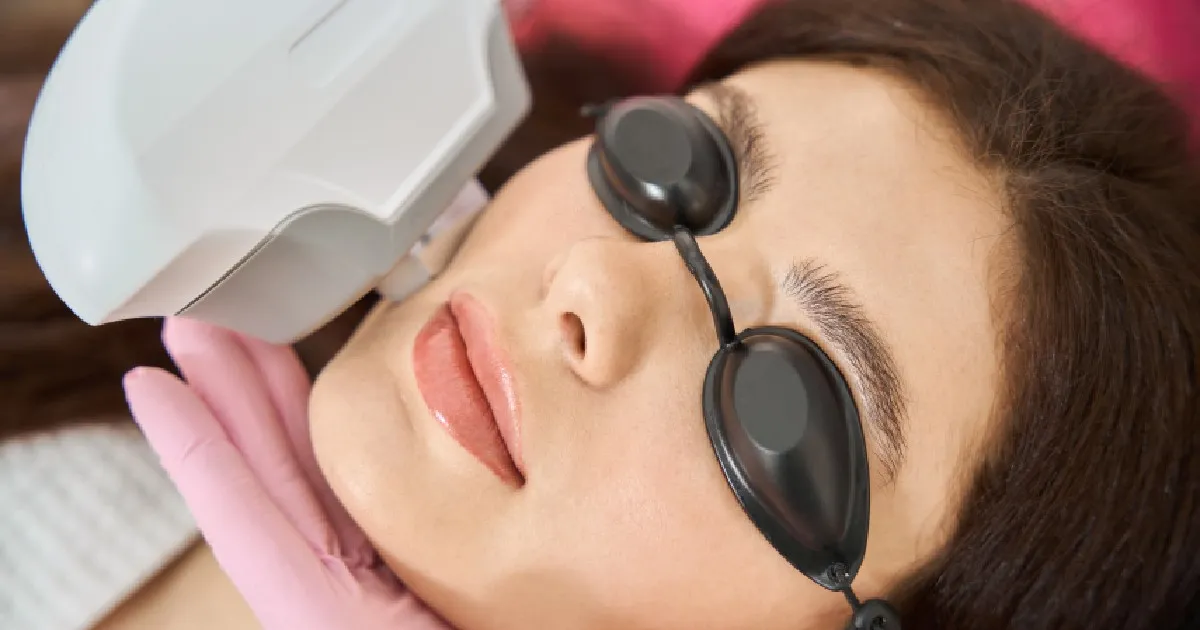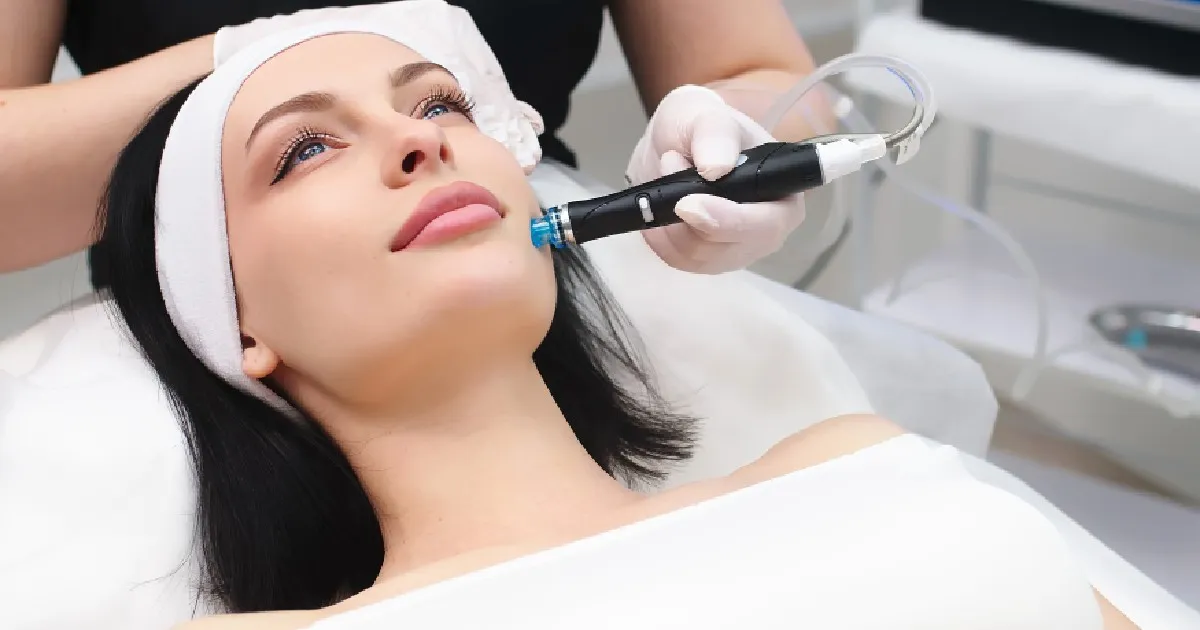Both chemical peeling and laser treatment are cosmetic procedures used to improve the appearance of the skin, but they function in distinct ways. Knowing which treatment is better for a person’s needs is essential, as chemical peeling and laser treatment have different effects and benefits. As of matter of fact, understanding the differences can help individuals make informed decisions about which treatment may be best for them.
What Is Chemical Peeling?
Chemical peeling is a cosmetic procedure that involves an application of a chemical solution to the skin, causing it to exfoliate and eventually peel off, resulting in a smoother skin texture. The chemical solution exfoliates dead skin cells while stimulating the creation of new skin cells, resulting in enhanced skin texture and tone, as well as minimizing the appearance of fine lines, wrinkles, acne scars, and age spots.
In fact, there are three main types of chemical peels:
- Superficial peels. This peel uses a mild acid, such as alpha-hydroxy acid, to penetrate only the outermost layer of skin. Superficial peels can help improve skin texture, tone, and the appearance of fine lines.
- Medium peels. A medium peel penetrates the outer and middle layers of the skin using a stronger acid, such as glycolic acid or trichloroacetic acid. Medium peels can help improve the appearance of age spots, fine lines, and moderate skin discoloration.
- Deep peels. A deep peel penetrates the deeper layers of skin using a strong acid, such as phenol. This peel can help improve the appearance of deep wrinkles, scars, and severe skin discoloration. However, deep peels require a longer recovery time and may have more potential side effects.
In addition, the following are the benefits of chemical peels:
- Improve the overall skin texture and tone
- Lessen the visibility of fine lines and wrinkles
- Minimize the appearance of acne scars and sun damage
- Reduce hyperpigmentation and dark spots
- Stimulate collagen production
- Smooth out rough or uneven skin texture
- The quick and easy procedure with minimal downtime
While chemical peeling is a safe procedure for most individuals, the ideal candidate is someone who has concerns related to hyperpigmentation, fine lines, wrinkles, acne, or scarring. Good candidates should have overall healthy skin and realistic expectations about the results. On the other hand, people with certain medical conditions or medications may not be suitable candidates for chemical peeling.
What Is A Laser Treatment?
Laser treatment is a cosmetic procedure that uses a laser to improve the skin’s texture, tone, and appearance. The treatment works by using a high-intensity light beam to remove the outer layer of damaged skin cells, promoting the growth of new skin cells and collagen fibers, which can enhance skin texture and lessens the visibility of fine lines, wrinkles, and scars. The laser can also stimulate the production of new collagen, which can help to tighten and firm the skin.
In fact, there are several types of laser skin resurfacing treatments, including:
- Ablative laser resurfacing. This procedure uses a laser to remove the outer layer of skin, allowing new skin cells to form and giving the skin a smoother and younger appearance.
- Fractional laser resurfacing. This procedure creates micro-injuries in the skin, stimulating the body’s natural healing process and promoting collagen production, improving skin texture and appearance.
- Non-ablative laser resurfacing. This procedure targets the underlying layers of skin without damaging the outer layer, promoting collagen production and improving skin texture and appearance.
- Intense pulsed light (IPL) therapy. This procedure uses high-intensity pulses of light to treat a range of skin conditions, including fine lines, wrinkles, and age spots.
In addition, laser treatments have several benefits, including:
- Precision
- Versatility
- Minimal downtime
- Long-lasting results
- Boosts collagen production
While laser treatment is generally safe and effective for most people who want to improve the appearance and texture of their skin, good candidates for laser treatment may include those who have the following:
- Fine lines, wrinkles, and acne scars.
- Age spots, sun damage, and hyperpigmentation.
- Uneven skin tone and texture.
- Loose, sagging skin.
- Stretch marks and scars.
- Tattoos or unwanted hair.
What Is The Difference Between Chemical Peeling and Laser Treatment?
Chemical peeling and laser treatment are two of the most popular non-surgical cosmetic treatments available for improving skin texture and appearance. Here’s a comparison of the two treatments:
- Treatment process. Chemical peeling involves applying a chemical solution to the skin to remove the outer layers and stimulate new skin growth. At the same time, laser treatment uses high-energy light beams to penetrate deep into the skin and remove damaged tissue.
- Targeted issues. Chemical peeling is generally recommended for treating fine lines and wrinkles, acne scars, age spots, and sun damage. At the same time, laser treatment can address a wider range of issues, including deeper wrinkles, scarring, uneven skin texture, and even unwanted tattoos.
- Intensity. Chemical peels can be light, medium, or deep, depending on the chemical solution concentration used. Laser treatment can be either ablative (removing the outer layers of skin) or non-ablative (penetrating the skin without damaging the surface).
- Recovery time. Chemical peels require some downtime for the skin to heal, typically ranging from a few days to several weeks, depending on the depth of the peel, while recovery from laser treatment can be faster, with less downtime.
- Cost. Chemical peeling costs are generally less expensive than laser treatment, although the total cost can vary depending on the required treatments.
- Longevity. Both chemical peeling and laser treatment can provide long-lasting results, although longevity can vary depending on the skin condition’s severity, lifestyle factors, and other variables.
- Side effects. Both treatments carry some risk of side effects, including redness, swelling, and irritation, although these are generally temporary and mild.
Overall, the best choice between chemical peeling and laser treatment depends on the individual’s skin type, the severity of the skin condition being treated, and other factors. It’s best to consult a qualified skincare professional to determine the best treatment possible.
The Bottom Line
As chemical peeling and laser treatment have unique benefits, it’s important to consult with a dermatologist or skincare professional to determine which treatment is better suited for an individual’s specific skin concerns and needs. Meridian Medical Spa offers Chemical Peels, which is a safe and effective treatment option to improve skin texture and appearance, with the help of their experienced professionals and state-of-the-art equipment to ensure optimal results. Ultimately, get ready to peel away the years of skin imperfections with chemical peels at Meridian Medical Spa!






